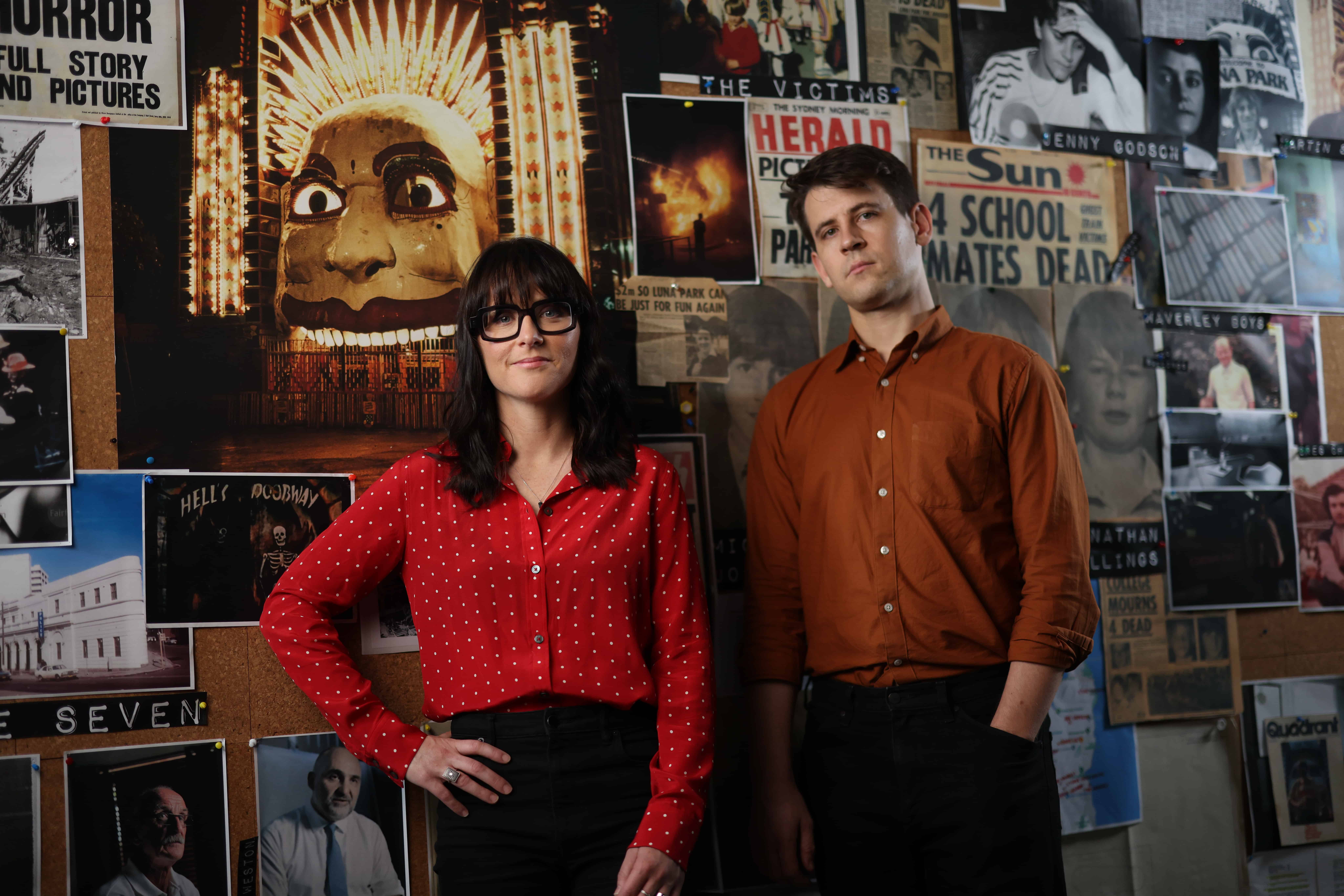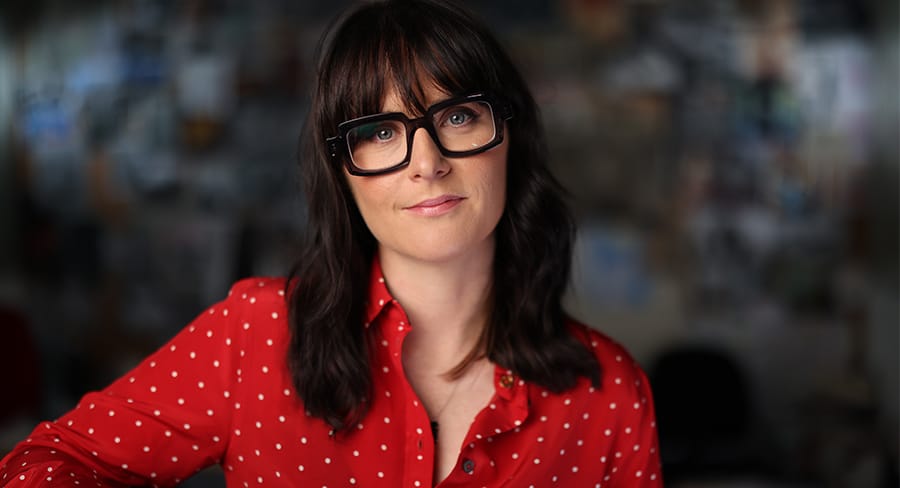On June 9th, 1979, the Ghost Train ride at Sydney’s Luna Park caught fire. The blaze killed six children and one adult, but despite a coronial inquiry the cause of the fire has never been determined.
The Ghost Train fire is the subject of the second series of ABC’s Exposed, created and presented by Walkley Award-winning journalist, Caro Meldrum-Hanna.
Mediaweek spoke to Meldrum-Hanna about what drew her to the story, and how the investigation was put together.
Choosing the story
Meldrum-Hanna says that the story was originally put forward by a friend of the show’s producer.
“This came through our producer and co-creator Jaya Balendra, through her connections in the art world.
“After we’d finished season one here at the ABC, Jaya’s friend said to her ‘before you entertain anything else, you’ve got to have a look at the Ghost Train fire, there’s so much to it.’
“In that first round of phone calls, it was almost universal. There would be this sharp intake of breath and there would either be tears straight away from people who were there that night or worked there, or there would be this sentence that just rings in my ears: ‘I have been waiting for this phone call for decades. I have been waiting for someone to pick this up and look at it.’ And that’s not any criticism to the journalists who had looked at this before, but I think the passage of time has allowed now for this full and bigger picture to be reported.”
Getting in contact
Creating the series took almost 80 on-camera interviews and almost 250 phone and research interviews with a wide range of people who were impacted by the fire in various ways. Meldrum-Hanna says that when it came time to track people down, there was a clear place to start.
“The first thing we did was get the parents of the victims, their participation, and their consent, that was really important to us… They all said ‘yes, we want this made, we don’t want our children to be forgotten, we think there was more to this, but we’ve never been able to get to the end of it.’”
After contacting the victim’s families, the search for other people involved began.
“It was days and days and days of cold calling, the office turned into a call center. It was down to White Pages, going through the phone book when we couldn’t find people. So we had this huge triangulation operation basically, where we had all sorts of websites, databases, electoral roles, ASIC business registries, rental histories, property histories, just crazy to try and track down these people.
“As the episodes develop, the investigative nature of the series really takes hold, we tracked down witnesses that said to us that they feared for their life speaking out, that’s why they’ve never spoken. One said ‘if I do this then I’m just waiting to get stabbed or shot cause that will be one less witness they’ll have to worry about.’”

Caro Meldrum-Hanna and co-reporter Patrick Begley
Finding a place to start
As well as contacting interview talent, Meldrum-Hanna and the team also had a huge amount of historical documents and other material to work through.
“We went all over the country to all sorts of libraries and archives, repositories, digging out stuff. Old plans, engineers’ diagrams, development plans, ministers’ diaries, you name it to try and get the full picture.
“The starting place is a giant timeline. So we pulled everything we could find plus then we pulled all of the clippings, every piece of reportage that was done for every single newspaper in the country – and there were a lot more back then than there are now. We pulled radio archives, TV archives, and with everything else we then build this giant chronology.”
Setting the scene
Despite the amount of written material to work with, there was hardly any footage of the fire.
“We went everywhere looking for archive of the actual fire and we ended up only ever managing to find almost 30 seconds of fire vision from that night – very little when you’ve got to tell a three-hour three-part series.
“So what we did was… we actually built it – the carriages, the imitation fireplace, everything to spec from engineers diagrams. The origin point of the fire, the glow in the dark paint, the exact placement of skeletons and spiders, the exact murals that were on the walls, the exact clocks that were at the front, the skeletons on the doors, right down to the minute details and the cage that the carriages come out to and go back inside, we built it all.
“It was huge. We shot half of it in the big sound studio out in Ultimo, and then we hired a disused quarry where we then trucked the set out to – we had pyrotechnicians, the fire brigade, and we set it on fire and it burnt as it burnt that night.”
Telling the story
The unfolding story of the Ghost Train fire is hard to watch at times, and that’s only as a viewer. Meldrum-Hanna says that while she doesn’t want to insert herself, it was an emotional story to tell.
“I’m just a human being like other people, I became very affected. Towards the end of it, I was physically sick before a series of final interviews, particularly the final interview with the family members. I was very nauseous because I knew the gravity of the material that was collected by the end of the investigation and what I had to talk through the families with. So that was really hard, probably the hardest interviews I’ve ever done.”
Exposed: The Ghost Train Fire airs on ABC and iview Tuesday March 16th at 8.30pm. It was created and hosted by Caro Meldrum-Hanna, produced and co-created by Jaya Balendra, co-reported by Patrick Begley, with researcher Dunja Karagic, cameraman Andy Taylor, and executive producer Sue Spencer.
